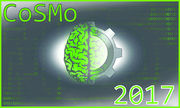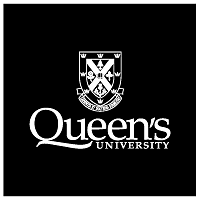Difference between revisions of "CoSMo 2017"
(→Group projects) |
|||
| (5 intermediate revisions by one other user not shown) | |||
| Line 1: | Line 1: | ||
This page contains course materials for the [http://www.compneurosci.com/CoSMo/program.html CoSMo 2017] summer school. | This page contains course materials for the [http://www.compneurosci.com/CoSMo/program.html CoSMo 2017] summer school. | ||
[[File:CoSMoLogo2017.jpg | thumb | CoSMo logo]] | [[File:CoSMoLogo2017.jpg | thumb | CoSMo logo]] | ||
| + | |||
| + | ---- | ||
| Line 17: | Line 19: | ||
'''Afternoon tutorial 1 - plotting neural data''' | '''Afternoon tutorial 1 - plotting neural data''' | ||
| − | Here is the file [[http:// | + | Here is the file [[http://compneurosci.com/wiki/images/M1_Stevenson_Binned.mat Stevenson Data Set]] |
As part of the tuning curve exercise we will understand it. <br> | As part of the tuning curve exercise we will understand it. <br> | ||
| Line 66: | Line 68: | ||
=== Day 3 (evening) - paper writing 101 === | === Day 3 (evening) - paper writing 101 === | ||
| − | Konrad talked about [http:// | + | Konrad talked about [http://compneurosci.com/wiki/index.php/Paper_Writing_101 paper writing 101]. This is also formalized in the [http://www.biorxiv.org/content/early/2016/12/17/088278 Ten simple rules for structuring papers] article. <br> |
| Line 92: | Line 94: | ||
[[Media:Model_evaluation_CoSMo2017.pdf | Model evaluation slides]] also containing the brainstorming outcome | [[Media:Model_evaluation_CoSMo2017.pdf | Model evaluation slides]] also containing the brainstorming outcome | ||
| + | |||
| + | ---- | ||
| Line 101: | Line 105: | ||
[[Media:Drugowitsch_cosmo2017-perceptual_decisions.pdf | Jan's slides]] <br> | [[Media:Drugowitsch_cosmo2017-perceptual_decisions.pdf | Jan's slides]] <br> | ||
[https://github.com/DrugowitschLab/CoSMo2017 Jan's tutorial material] <br> | [https://github.com/DrugowitschLab/CoSMo2017 Jan's tutorial material] <br> | ||
| + | |||
| + | ---- | ||
| Line 112: | Line 118: | ||
[https://www.dropbox.com/sh/uhe0bbgkyohlhx5/AABO9rIeIXlt-Q8JjpM4OwuUa?dl=0 SLIDES AND PROBLEMS] <br> | [https://www.dropbox.com/sh/uhe0bbgkyohlhx5/AABO9rIeIXlt-Q8JjpM4OwuUa?dl=0 SLIDES AND PROBLEMS] <br> | ||
| + | |||
| + | ---- | ||
== From basic insights to clinical applications == | == From basic insights to clinical applications == | ||
| Line 119: | Line 127: | ||
[https://drive.google.com/a/husky.neu.edu/file/d/0B8XrhP_fMLgETmloWW50NWRxZzA/view?usp=drive_web DAY 1 MATERIALS] <br> | [https://drive.google.com/a/husky.neu.edu/file/d/0B8XrhP_fMLgETmloWW50NWRxZzA/view?usp=drive_web DAY 1 MATERIALS] <br> | ||
[https://drive.google.com/drive/folders/0B8XrhP_fMLgEY2xUaDdDQWl6clE DAY 2 MATERIALS] <br> | [https://drive.google.com/drive/folders/0B8XrhP_fMLgEY2xUaDdDQWl6clE DAY 2 MATERIALS] <br> | ||
| + | |||
| + | ---- | ||
| Line 127: | Line 137: | ||
You can get the DREAM project from Gunnar on a USB drive. DREAM can also be downloaded piece-wise (data sets, models, tools, and documentation) from CRCNS: http://crcns.org/data-sets/movements/dream/downloading-dream. You will need to [https://crcns.org/join_form?came_from=http%3A//crcns.org/data-sets/movements/dream/downloading-dream create] an account on CRCNS to be able to download the project files. | You can get the DREAM project from Gunnar on a USB drive. DREAM can also be downloaded piece-wise (data sets, models, tools, and documentation) from CRCNS: http://crcns.org/data-sets/movements/dream/downloading-dream. You will need to [https://crcns.org/join_form?came_from=http%3A//crcns.org/data-sets/movements/dream/downloading-dream create] an account on CRCNS to be able to download the project files. | ||
<!--[[File:AllDream.zip]]--> | <!--[[File:AllDream.zip]]--> | ||
| − | If you want "all" of DREAM (models, tools, and documentation), click here: [http:// | + | If you want "all" of DREAM (models, tools, and documentation), click here: [http://compneurosci.com/wiki/images/AllDream.zip AllDream.zip] <br> |
:If you're familiar with svn and would like info/credentials for code in the repository, contact [[Ben Walker]] | :If you're familiar with svn and would like info/credentials for code in the repository, contact [[Ben Walker]] | ||
| Line 151: | Line 161: | ||
*[[Media:Wei_2010.pdf | Wei 10]] -- movement in differing force fields <br> | *[[Media:Wei_2010.pdf | Wei 10]] -- movement in differing force fields <br> | ||
*[[Media:Young_2009.pdf | Young]] -- movement time stayed the same, but distance changed; fast, medium, slow reaches. <br> | *[[Media:Young_2009.pdf | Young]] -- movement time stayed the same, but distance changed; fast, medium, slow reaches. <br> | ||
| + | |||
| + | ---- | ||
Latest revision as of 14:48, 6 February 2018
This page contains course materials for the CoSMo 2017 summer school.
Contents
Introduction
Jul 31 - Aug 4
Lecturers: Gunnar Blohm, Paul Schrater, Konrad Kording
Day 1 - Overview of sensory-motor computations
Organization slides
Philosophy of modelling slides
Sensorimotor overview slides
Afternoon tutorial 1 - plotting neural data
Here is the file [Stevenson Data Set]
As part of the tuning curve exercise we will understand it.
Tutorial is available here
Afternoon tutorial 2: gain modulation for reference frame transformations
The goal of this tutorial is to understand how gain modulation can be used for reference frame transformations and how gain modulation can emerge from training a simple artificial neural network carrying out reference frame transformations.
There are 2 different approaches to solving this:
- exact determination of read-out weights from eye-position gain-modulated neurons as in this seminal paper. Here the solution can be found by computing the least-square optimal set of weights mapping the gain-modulated neurons (population code) to head-centered output neuron(s). For this to work, population code neurons need to be of the exponential function family.
- training a neural network to perform reference frame transformations using this code. For this you can plot each individual neuron's receptive field for different eye positions and analyze how the receptive field changes with eye position in each network layer.
Day 2 - Bayesian approaches
Bayesian perception - an introduction: a tremendous book written by Wei Ji Ma, Konrad Kording, Daniel Goldreich
AFTERNOON LECTURE TUTORIAL
Dropbox link to slides and tutorial: Material for decision making lecture and tutorial
Day 2 (evening) - How to model tutorial
Paul's Illusion exercise slides are in the afternoon tutorial dropbox.
Day 3 - Linear systems
Morning lectures and tutorials (Theory and saccades)
Linear systems theory slides
Modelling saccades slides
van Opstal syllabus - linear systems theory: a great syllabus developed by John van Opstal for CoSMo on using linear systems to model gaze control with theory, exercises and answers to exercises
Afternoon lectures and tutorials (Kalman filter)
Face attractiveness and decision tutorials, and lecture slides
Here are modeling tutorial instructions. Please also read the papers by Lappe and Seno.
Day 3 (evening) - paper writing 101
Konrad talked about paper writing 101. This is also formalized in the Ten simple rules for structuring papers article.
Day 4 - Optimal Feedback Control
Inverted pendulum problem
LQG code
Day 5 - optimality and model fitting
Konrad discussed if we can understand a micro-processor. This is published here
BADS model fitting (afternoon)
Luigi Acerbi's slides
Tutorial files
Model evaluation discussion
Model evaluation slides also containing the brainstorming outcome
The Bayesian Brain
Aug 5
Lecturer: Jan Drugowitsch
Jan's slides
Jan's tutorial material
Motor control & learning
Aug 7-8
Lecturers: Alaa Ahmed and Reza Shadmehr
Morning Lectures
Afternoon Problems and Lecture slides
From basic insights to clinical applications
"Aug 9-10"
Lecturer: Dagmar Sternad
DAY 1 MATERIALS
DAY 2 MATERIALS
Jul 31 - Aug 13
Curtesy: Konrad Kording
You can get the DREAM project from Gunnar on a USB drive. DREAM can also be downloaded piece-wise (data sets, models, tools, and documentation) from CRCNS: http://crcns.org/data-sets/movements/dream/downloading-dream. You will need to create an account on CRCNS to be able to download the project files.
If you want "all" of DREAM (models, tools, and documentation), click here: AllDream.zip
- If you're familiar with svn and would like info/credentials for code in the repository, contact Ben Walker
Here's the latest version of LoadDreamPaths.m. (This script should work for all OSes.)
Here is a description of data sets currently in Dream. Dream is growing, but this list is accurate as of the time of the summer school (click on the link to access the related publication).
- Burns -- reaching with head tilt and left/right visual perturbations
- Corbett -- reach trajectory predictions based on EMG and gaze movements
- Fernandes -- reaching with uncertain and rotated midpoint feedback
- Flint -- decoding of reaching movements from local field potentials
- Kording -- reaching with uncertain midpoint feedback
- Mattar 07 -- generalizing from one, two or multi targets to another direction
- Mattar 10 -- reaching to a distance (short/long), generalizing to the other one (long/short)
- Ostry -- move in force field, get an estimation of where the hand is
- Scott -- monkey (no spike), center out: even and not evenly distributed targets, also a forward/back
- Stevenson -- center out, monkey with neural time stamps
- Thoroughman -- reach adaptation to perturbations with different complexity
- Vahdat -- movement in force field with FMRI scans pre/post learning
- Wei 08 -- visual perturbations, cursor shown only at target
- Wei 10 -- movement in differing force fields
- Young -- movement time stayed the same, but distance changed; fast, medium, slow reaches.
Group projects
Jul 31 - Aug 12
Here are some ideas for 2-week project topics.
Group project presentation template
Instructions: Every group will have a 30min slot (20min presentation, 10min questions). The research question, hypotheses and rationale for the choice of the approach should be clearly presented. Models, simulations, results, discussion etc should be detailed enough for everyone to follow.
Best group gets a free short talk at Advances in Motor Control and Motor Learning 2017 (SfN satellite workshop)!!! (confirmed by John Krakauer)
Here is a link to the SfN satellite events - submission deadline Sept 15 !!! The winner has to apply too and specify you are CoSMo 2017 project winner...
PROJECT PRESENTATIONS (Sat, Aug 12)
12:30-1pm - Kalman Kong and four Monkeys
"Does uncertainty in visual and proprioceptive hand estimates determine the degree of sensory recalibration?"
Group: Eugene Poh, Gaiqing Kong, Jianfei Guo, Pierre Petitet, Zhaoran Zhang
1-1:30pm - Buzzfeed LAMAS
"You won't BELIEVE how S1 spiking activity encodes sensory feedback for goal directed movements in a grasping task!"
Group: Liza Okorokova, Alex Kaiser, Monica Liu, Spencer Arbuckle, Angelica Herrera
1:30-2pm - The Acronym
"Influence of task difficulty history on the adaptation rate in a motion prediction task"
Group: Chloe, Moji, Ben, Jonny and Corson
2-2:30pm - Too Bayesic
"Copy-mechanism explains transfer in visual perceptual learning"
Group: Suraj Chakravarthi Raja, Pedro Cisneros-Velarde, Wanying Jiang, Katrin Sutter
2:30-3pm - Cucumber Nation
"Modelling savings using a probabilistic estimate of the environment"
Group: Kevin Day, Hyosub Kim, Rory Flemming, Agustin Solano, Jing Huang
3-3:30pm - The encoders
"Bayesian Decision Making in Biological Motion"
Group: Anakani Chattoraj, Deepak Gopinath, Khashayar Misaghian, Albert Buchard, Santiago Alonso-Diaz
3:30-4pm - Where-The-Fovea? (WTF)
"Do natural scenes influence the development of the preferred retinal location with foveal scotoma?"
Group: Yangzi, Rakesh, Ali, Charlotte, & Immo
4-4:30pm - Eurovision
"Can people make optimal decisions when both visual evidence and reward vary over time?"
Group: Ioanna Polyzou, Baptiste Caziot, Jozsef Arató, David Aguilar-Lleyda
4:30-5pm - Team Locomotion
"Predicting optimal gaze direction as a function of running speed when running on targets"
Group: Nidhi Seethapathi, Tzu-Hsiang Lin, Yashar Aucie

